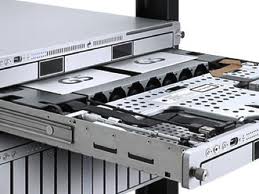Author:
Erik Eckel
Predictions are dangerous business. But they sure can be fun. Without study, minus a double-blind study, and absent even a single peak at a rumor-mill website, here’s what I think 2011 holds in store for Mac administrators.
1. Apple abandons the Xserve platform
Okay. That’s an easy one. On January 31 Apple will no longer sell Xserve servers. Mac OS X Snow Leopard Server is finding considerable traction among small businesses that find the Mac Mini server well positioned to meet their needs. Other organizations requiring greater data storage, advanced RAID performance or faster processing capacity have a more-than-capable solution in Apple’s Mac Pro chassis. In fact, the Mac Pro chassis (two of which consume 12U of rack space) can be specified with performance configurations that
exceed the performance capacity of the older Xserve architecture.
2. Apple releases new, more potent systems
As is typical, Apple will release new and more potent desktops and laptops. I suspect we’ll see iMacs and MacBook Pros incorporating Intel’s new i3 and i5 CPUs. We should see more choices in solid state disk drives, traditional hard disks with larger storage capacity, and video cards sporting additional onboard RAM. That’s no stretch. I wouldn’t be surprised to see Apple up the processing and storage capacity of its Mac Mini Snow Leopard Server, which is enjoying runaway popularity.
3. The summer of the Lion
What will prove unusual is Apple’s offering desktops and laptops with Mac OS X
Lion. The OS, scheduled for summer release, will introduce the Mac App Store to desktop and laptop computers, as well as Mission Control and LaunchPad. Mac OS X Lion’s more iPad- and iPhone-like graphic user interface and operation will change the way users operate computers. Instead of utilizing store-bought or channel-distributed software, as is traditionally common, and instead of requiring users to continue interacting with their computers using old-school methods (such as via antiquated menus and navigational structures), Lion is going to simplify desktop and laptop use, while adding efficiency and enhancing productivity.
4. iPhone 5 improvements
A new generation iPhone will be due later in 2011. Apple’s done well making its iPhone easier to synchronize with an Exchange server than even Windows Mobile phones, in my consulting office’s experience. Don’t be surprised to see additional enhancements added that increase enterprise functionality. Want more specific details? I’ll go out on a limb and predict 4G service, a 64GB model and a CPU that’s 50% faster than the current iPhone 4 unit. What you won’t see is Flash support. Oh, and you’ll get more carriers, too, meaning more enterprises can bring iPhones online.
5. iPad enhancements
The second generation of iPads will hit shelves in 2011. Look for an integrated camera. That will prove no surprise. What I’d like to see is an integrated USB port for connecting peripherals or transferring data. But I think Apple is committed to the cloud. And, just as Steve Jobs decided long ago that Mac laptop users don’t need a docking station, I suspect USB won’t be making an appearance on the next-gen iPad. Apple (and its cellular friends at AT&T and Verizon) would rather have you use iDisk and other Internet services for file access, storage and transfer. Apple designers need to decrease the unit’s weight, while making it faster and capable of storing more data, all at less cost, of course. That’s a challenge, but I think you’ll see it happen.
 By
By 














